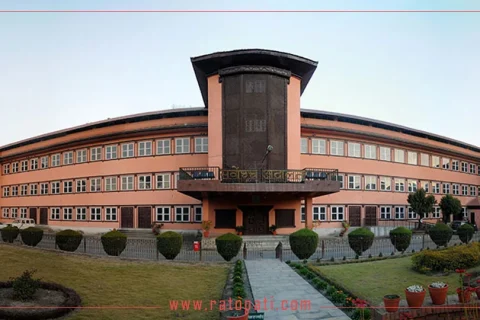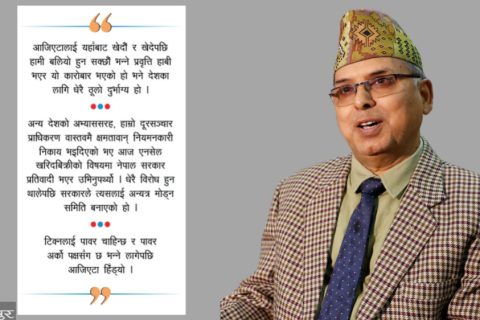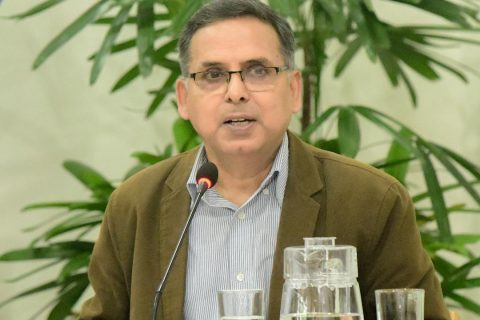Why did Nepal take so long to usher in democracy? While some writers blame it on Hill elites, others point fingers at India
Dwarika Nath Dhungel and Madan Kumar Dahal began with an ambitious goal — of producing a comprehensive account of a country that has been in a democratic transition for nearly seven decades.
The chapters dealing with the social structure of Nepali Society and corruption, ‘the bane of Nepali governance,’ throw light on fundamental issues but their role in prolonging the transition to democracy is unfortunately not explored.
Instead, what is lamented repeatedly is Nepal’s geography, a theme invoked by the founder of a unified Nepal, Prithvi Narayan Shah, more than 250 years ago in the memorable phrase — “a yam between two boulders.” This often leads to blaming India and many of the contributors follow this well-trodden path.
Tracing the roots
In the first chapter ‘Historical Perspective’, Tri Ratna Manandhar describes the demise of the century old Rana regime in 1950-51 and makes the startling observation that “Pandit Nehru was not in favour of a democratic government in Nepal.” This is based on Nehru’s suggestion for including the more reformist Rana members in an interim government with Nepali Congress (NC) in the lead, till an elected Constituent Assembly wrote a new constitution.
The reality is that in less than five years, the NC was factionalised between B.P. Koirala, M.P. Koirala, Bhadrakali Mishra and Bal Chandra Sharma and with King Mahendra taking over in 1955, the nascent democratic experiment was nipped in the bud. He was determined to exercise direct control and instead of elections for a Constituent Assembly, ‘gifted’ a constitution to the Nepali people in 1959 and announced general elections within a week. Hardly an auspicious beginning!
This constitution died soon thereafter and as Bipin Adhikari recalls in the third chapter, “in December 1962, Mahendra announced a new constitution, which created a system more reminiscent of the 104-year-old Rana rule rather than a move towards democracy.” After nearly three decades during which political parties were banned, a new constitution enshrining multiparty democracy with a constitutional monarchy was promulgated in 1990. Nepal’s political parties fractured as King Birendra tried to play favourites and by the mid-1990s, Nepal was facing a growing Maoist insurgency that would last for a decade claiming over 15,000 lives. Following an Interim Constitution in 2007 which paved the way for a fresh Constituent Assembly, a new constitution was adopted in 2015, abolishing monarchy and establishing Nepal as a federal, democratic republic.
Yet Bipin Adhikari concludes that “Nepal’s major problem in institutionalising constitutional democracy is more external geopolitical than internal.” A more balanced analysis would attribute responsibility with the Palace, with Mahendra for his ‘partyless democracy’ which stunted politics for three decades and then with Birendra and Gyanendra who saw the slide into a full blown Maoist insurgency but remained occupied with manipulating political parties by playing favourites and encouraging factionalism. This desire to give monarchy a pass seems shows up again and again.
Free movement
With no evidence, it is claimed that “India pressured Prime Minister Mohan Shamsher to sign the controversial India-Nepal Treaty of Peace and Friendship on July 31, 1950. The treaty allowed free movement of people and goods between the two nations and also contained provisions that affected Nepal in a precarious way. From that day on, India started insisting on open international borders for Indians and eventual planned settlement of Indian immigrants in Nepal.” Such unsubstantiated claims have fed an anti-Indian narrative that has unfortunately taken root in the minds of the Hill elites. The fact is that the Rana regime, unnerved by the Maoist revolution in China and the Tibet take-over, was zealous in courting India with the 1950 Treaty which is largely based on the 1923 treaty between Nepal and the British Indian government.
Nepal’s difficulties
Furthermore, the open border has existed for centuries and attempts by India to introduce any kind of controls are fiercely resisted by Nepal. Free movement of people and goods is a unilateral benefit for the people of Nepal (except for visa free travel) because India has voluntarily chosen to drop reciprocity. There are over six million Nepali citizens working in India as they do not need work permits. Wealthy Nepalis routinely purchase properties in India, open bank accounts, and trade on the Indian stock market. Indian citizens do not enjoy such rights.
Blaming ‘geopolitcs’ obscures the real reasons behind Nepal’s difficulties. The dominance of the Hill elites has prevented social reform. That is why even though “the Muluki Ain of 1963 abolished the caste based social customs, marriage laws, and rigid hierarchy, caste, as the dominant form of Nepali social structure, is alive even today” (Dilli Ram Dahal in Chapter 2). Widespread corruption is another cause. Rabi Raj Thapa and Chiran Jung Thapa in Chapter 7 point out that of 13 chiefs of the Nepal Police since 1990, “six have been officially charged with corruption.” Similarly, of seven chiefs of the paramilitary Armed Police Force established in 2001, one was killed by the Maoists and “all others have been charged with corruption.”
The desire to blame a large neighbour is understandable and India’s behaviour at times merits criticism but the real reasons for Nepal’s prolonged transition need greater introspection than this book reflects. It’s a patchy account, possibly because many of the contributors reflect nostalgia for a monarchy that has become history.
Nepal: A Country in Transition; Edited by Dwarika Nath Dhungel & Madan Kumar Dahal, Rupa, Rs 995.







